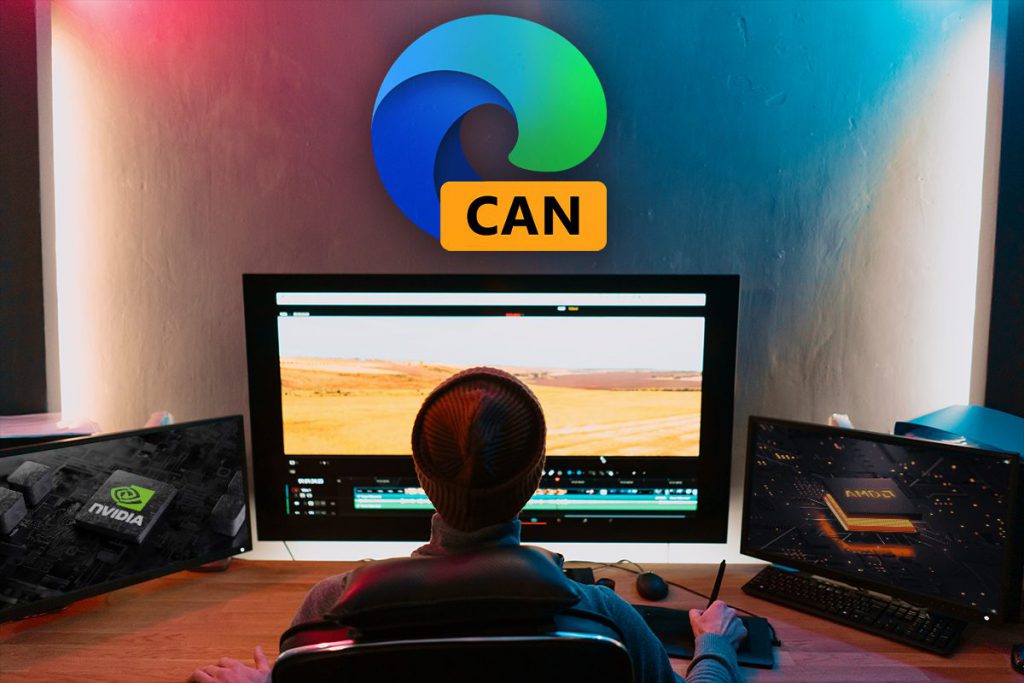Subscribe
"Unlock exclusive insights and elevate your financial wisdom with NetWorth.com — subscribe now to stay ahead in the wealth game!"

In this article, we’ll explore Microsoft’s latest experimental feature in Edge Canary that promises to revolutionize video streaming for Windows users.
Key Takeaways:
Microsoft’s latest experimental feature in Edge Canary, called Video Super Resolution (VSR), promises to revolutionize video streaming for Windows users.
This feature utilizes machine learning algorithms to enhance the quality of videos viewed in Microsoft Edge.
VSR eliminates the blocky compression artifacts and enhances the video resolution, giving the audience clear and sharp videos on different streaming sites like YouTube without using much bandwidth.
Previously, NVIDIA video card owners had the luxury of video upscaling in Chrome or Edge. But, Microsoft is now testing the Video Super Resolution feature in Edge Canary, which works on both AMD- and NVIDIA-powered GPUs.
Users will need at least a GeForce RTX 20 series or Radeon RX5700 to access this feature, but it could help them watch old YouTube videos or save bandwidth on a capped data plan.
To use VSR, certain requirements must be met. Firstly, VSR is only accessible to Windows users.
Secondly, the video must be played in a resolution lower than 720p, and the device must be connected to a power source.
Thirdly, the video’s height and width must be greater than 192 pixels.
Finally, videos with digital rights management (DRM) systems like PlayReady or Widevine cannot be processed by the browser, and frames from these protected videos are not accessible for enhancement.
At present, users with hybrid graphics setups on their laptops will have to force Edge to use their dedicated GPU to access this feature.
However, automatic hybrid video support is currently in development, according to Microsoft.
The technology behind Video Super Resolution relies on GPU-agnostic algorithms.
Microsoft had to add a DirectX 12 pipeline to Google’s Chromium engine so that its machine learning framework could interact with the browser.
This compression helps keep the computational load relatively light.
Currently, Video Super Resolution is only available to a handful of Edge Canary users.
However, Microsoft plans to make this feature available to additional users over the coming weeks.
The company also plans to expand the list of supported GPUs, so if your hardware isn’t initially compatible, don’t be disheartened.
It will likely take a while before betas and polished versions support the feature.
Video Super Resolution uses ONNX Runtime and DirectML to make it accessible to more users.
These teams have spent years refining their technology to make the most of your graphics card’s processing power.
The MSRA’s machine learning models are a significant part of the VSR feature. These models were distilled and compressed by the Microsoft DeepSpeed team from a much larger model.
Although the base machine learning models improve the quality of the video, they require high compute cost, making it challenging to achieve real-time inference on consumer GPUs.
To overcome this challenge, the DeepSpeed team used advanced compression techniques to reduce the model size and inference cost.
Microsoft also focused on video enhancement metrics, which include LPIPS and FVD, but these metrics cannot fully reflect human perceptual preference.
The MSRA team built an end-to-end pipeline to subjectively evaluate video enhancement tasks’ performance.
Video Super Resolution is an exciting new feature that promises to revolutionize the quality of videos viewed in Microsoft Edge.
While the feature is currently only available to a select few Edge Canary users, Microsoft plans to expand its availability over the coming weeks and widen the list of supported GPUs.
By utilizing the ONNX Runtime and DirectML, Video Super Resolution is portable across GPU vendors and makes the most of the processing power of your graphics card.
The machine learning models from MSRA, which were compressed by the Microsoft DeepSpeed team, improve visual quality over traditional up-sampling methods, and evaluation metrics for subjective evaluations were developed by the MSRA team.
Video Super Resolution is set to enhance the streaming experience for Windows users, providing crisp and clear videos on various streaming platforms without sacrificing bandwidth.